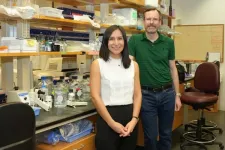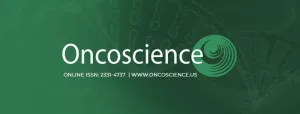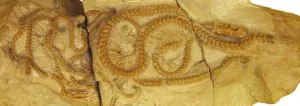(Press-News.org) When deciding what material to use for infrastructure projects, metals are often selected for their durability. However, if placed in a hydrogen-rich environment, like water, metals can become brittle and fail. Since the mid-19th century, this phenomenon, known as hydrogen embrittlement, has puzzled researchers with its unpredictable nature. Now, a study published in Science Advances brings us a step closer to predicting it with confidence.
The work is led by Dr. Mengying Liu from Washington and Lee University in collaboration with researchers at Texas A&M University. The team investigated formation of cracks in initially flawless, crack-free samples of a nickel-base alloy (Inconel 725), which is primarily known for its strength and corrosion resistance. There are currently several working hypotheses that attempt to explain hydrogen embrittlement. The results of this study show that one of the more well-known hypotheses — hydrogen enhanced localized plasticity (HELP) — is not applicable in the case of this alloy.
Plasticity, or irreversible deformation, is not uniform throughout a material, but is instead localized to certain points. HELP hypothesizes that cracks initiate at the points with the highest localized plasticity.
“As far as I know, ours is the first study that actually looks in real time to see where cracks initiate — and isn't at locations of highest localized plasticity,” said co-author Dr. Michael J. Demkowicz, a professor in the Department of Materials Science and Engineering at Texas A&M University and Liu’s PhD advisor. “Our study tracks both the localized plasticity and the crack initiation locations in real time.”
Tracking crack initiation in real time is crucial. When examining a sample after a crack has appeared, the hydrogen has already escaped from the material, making it impossible to understand the mechanism that led to the damage.
“Hydrogen easily escapes from metals, so you can’t figure out what it does to embrittle a metal by examining specimens after they’ve been tested. You have to look while you’re testing,” said Demkowicz.
This study helps to lay the groundwork for better predictions of hydrogen embrittlement. In the future, hydrogen may replace fossil fuels as a clean energy source. If this change occurs, all of the infrastructure currently used to store and use fossil fuels would become susceptible to hydrogen embrittlement. Predicting embrittlement is crucial for preventing unexpected failures, making a future hydrogen economy possible.
The experiments for this study, as well as the preliminary data analysis, were conducted at Texas A&M, with Liu providing further data analysis and manuscript preparation at Washington and Lee. This paper is co-authored by Liu, Demkowicz and Texas A&M doctoral student Lai Jiang.
By Alyssa Schaechinger, Texas A&M University Engineering
###
END
Cracking the code of hydrogen embrittlement
Researchers zero in on the underlying mechanism that causes alloys to crack when exposed to hydrogen-rich environments, like water
2024-07-19
ELSE PRESS RELEASES FROM THIS DATE:
Long-term results from Testicular Cancer treatment are positive, study shows
2024-07-19
A new study shows that by combining different chemotherapy drugs, testicular cancer remains highly treatable and often curable, even after first-line treatment fails. .
The recent study published in the prestigious Journal of Clinical Oncology (JCO) was led by Professor Jack Gleeson, Associate Professor at Cancer Research at University College Cork (UCC) and the Medical Oncology Department at Cork University Hospital, and was conducted during his time at Memorial Sloan Kettering Cancer Center in New York.
Over ...
EPA awards UMass Amherst nearly $6.4 million to help shrink the steel industry’s carbon footprint
2024-07-19
AMHERST, Mass. – The building and construction industry accounts for 37% of global greenhouse emissions—and the steel production process can be a significant contributor to these emissions. To steer the industry in a new direction, the University of Massachusetts Amherst has been selected to lead a $6.37 million five-year grant by the Environmental Protection Agency (EPA).
“We’re trying to recalibrate the industry,” says Kara Peterman, associate professor ...
Valentina Greco takes on new position as President of the ISSCR
2024-07-19
The ISSCR is thrilled to announce Valentina Greco, Yale School of Medicine, Genetics Department and Yale Stem Cell Center USA, as its President. Her term began at the ISSCR 2024 Annual Meeting held in Hamburg, Germany that concluded on Saturday, 13 July 2024.
“I am honored to be taking on the role of ISSCR President for the coming year,” Dr. Greco said. “Building on Amander Clark’s efforts, my focus will be on people and scrutinizing processes so that they better support the diversity of needs of our members across identities including geographies and career stages. In turn ...
Komen supports UVA Engineering researchers targeting ‘triple negative' breast cancer
2024-07-19
Through precision medicine, the University of Virginia is working toward a world in which no more pink ribbons are necessary. To that end, Susan G. Komen announced support this summer for the UVA School of Engineering and Applied Science’s efforts to apply systems biology research to defeat breast cancer.
Komen announced a collective $10 million in research awards , including a $100,000 grant over two years to support the work of doctoral student Catalina Alvarez Yela, who is studying “triple negative” breast cancer, an aggressive type of invasive breast cancer ...
Panel issues first guidelines to prevent anal cancer in people with HIV
2024-07-19
New recommendations for screening and treatment are based on the results of a major national study led at UCSF.
Results from a national study led by UC San Francisco informed the first guidelines at the federal level in the United States to detect and treat anal cancer precursor lesions in people with HIV to reduce the risk of developing anal cancer.
The guidelines were published on July 9 by a panel of experts in HIV care, utilizing findings from the Anal Cancer/HSIL Outcomes Research (ANCHOR) trial led by Joel ...
Estimating rainfall intensity using surveillance audio and deep-learning
2024-07-19
Surveillance cameras generate both video and audio outputs. Unlike video images recorded, the audio can be supplemented reliably as audio sources resist background interference and lighting variability. Creating a reliable way to use these audio sources to estimate the intensity of rainfall could open a new chapter in rainfall intensity estimation.
In a study published in Environmental Science and Ecotechnology, researchers created an audio dataset of six real-world rainfall events, named the Surveillance Audio Rainfall Intensity Dataset (SARID). ...
Targeting factors for chemoprevention and cancer interception to tackle mesothelioma
2024-07-19
BUFFALO, NY- July 19, 2024 – A new research perspective was published in Oncoscience (Volume 11) on May 23, 2024, entitled, “Targeting inflammatory factors for chemoprevention and cancer interception to tackle malignant mesothelioma.”
In this perspective, researchers Joseph R. Testa, Yuwaraj Kadariya, and Joseph S. Friedberg from Fox Chase Cancer Center in Philadelphia, Pennsylvania, identify potential targets for mesothelioma prevention. Mesothelioma, an incurable cancer of the mesothelial lining, ...
New snake discovery rewrites history, points to North America’s role in snake evolution
2024-07-19
A new species of fossil snake unearthed in Wyoming is rewriting our understanding of snake evolution. The discovery, based on four remarkably well-preserved specimens found curled together in a burrow, reveals a new species named Hibernophis breithaupti. This snake lived in North America 34 million years ago and sheds light on the origin and diversification of boas and pythons.
Hibernophis breithaupti has unique anatomical features, in part because the specimens are articulated—meaning they were found all in one piece with the bones still arranged in the proper order—which is unusual for fossil snakes. Researchers believe it may be ...
Large and unequal life expectancy declines in India during COVID-19
2024-07-19
The international study, co-authored by the Department of Sociology and the Leverhulme Centre for Demographic Science’s Dr Aashish Gupta and Professor Ridhi Kashyap, reveals that life expectancy in India suffered large and unequal declines during the COVID-19 pandemic.
Overall, mortality across India was 17% higher in 2020 compared to 2019, implying 1.19 million excess deaths in India. This extrapolated estimate is about eight times higher than the official number of COVID-19 deaths in India, and 1.5 times higher than the World Health Organization’s estimates.
Ridhi ...
A study of 156,000 UK residents found that urban residents score the lowest in social and economic satisfaction and well-being
2024-07-19
A new study conducted by the Centre for Urban Mental Health at the University of Amsterdam finds that, in a sample of 156,000 UK residents aged 40 and up, urban living is linked to lower levels of well-being, social satisfaction, and economic satisfaction. Urban residents also exhibit greater psychological inequality. The study identifies a ‘Goldilocks zone’ between cities and rural areas, where the highest satisfaction and most equal scores are observed.
The percentage of people living in cities has surged from 10% in the 1910s to a projected 68% by 2050. This shift means ...
LAST 30 PRESS RELEASES:
New species of tiny pumpkin toadlet discovered in Brazil highlights need for conservation in the mountain forests of Serra do Quiriri
Reciprocity matters--people were more supportive of climate policies in their country if they believed other countries were making significant efforts themselves
Stanford Medicine study shows why mRNA-based COVID-19 vaccines can cause myocarditis
Biobanking opens new windows into human evolution
Sky-high smoke
AI tips off scientists to new drug target to fight, treat mpox
USC researchers develop next-generation CAR T cells that show stronger, safer response in animal models
New study reveals Industrial Revolution’s uneven health impacts across England
Vine-inspired robotic gripper gently lifts heavy and fragile objects
Fingerprint of ancient seafarer found on Scandinavia’s oldest plank boat
Lunar soil analyses reveal how space weathering shapes the Moon’s ultraviolet reflectance
Einstein’s theory comes wrapped up with a bow: astronomers spot star “wobbling” around black hole
Danforth Plant Science Center to lead multi-disciplinary research to enhance stress resilience in bioenergy sorghum
Home-delivered groceries improve blood sugar control for people with diabetes facing food insecurity
MIT researchers identified three cognitive skills we use to infer what someone really means
The Iberian Peninsula is rotating clockwise according to new geodynamic data
SwRI, Trinity University to study stable bacterial proteins in search of medical advances
NIH-led study reveals role of mobile DNA elements in lung cancer progression
Stanford Medicine-led study identifies immune switch critical to autoimmunity, cancer
Research Alert: How the Immune System Stalls Weight Loss
Glucagon-like peptide 1 receptor agonist use and vertebral fracture risk in type 2 diabetes
Nonadherence to cervical cancer screening guidelines in commercially insured US adults
Contraception and castration linked to longer lifespan
An old jeweler’s trick could unlock next-generation nuclear clocks
Older age, chronic kidney disease and cerebrovascular disease linked with increased risk for paralysis and death after West Nile virus infection
New immune role discovered for specialized gut cells linked to celiac disease
A new ‘hypertropical’ climate is emerging in the Amazon
Integrated piezoelectric vibration and in situ force sensing for low-trauma tissue penetration
Three-hit model describes the causes of autism
Beech trees use seasonal soil moisture to optimize water uptake
[Press-News.org] Cracking the code of hydrogen embrittlementResearchers zero in on the underlying mechanism that causes alloys to crack when exposed to hydrogen-rich environments, like water





